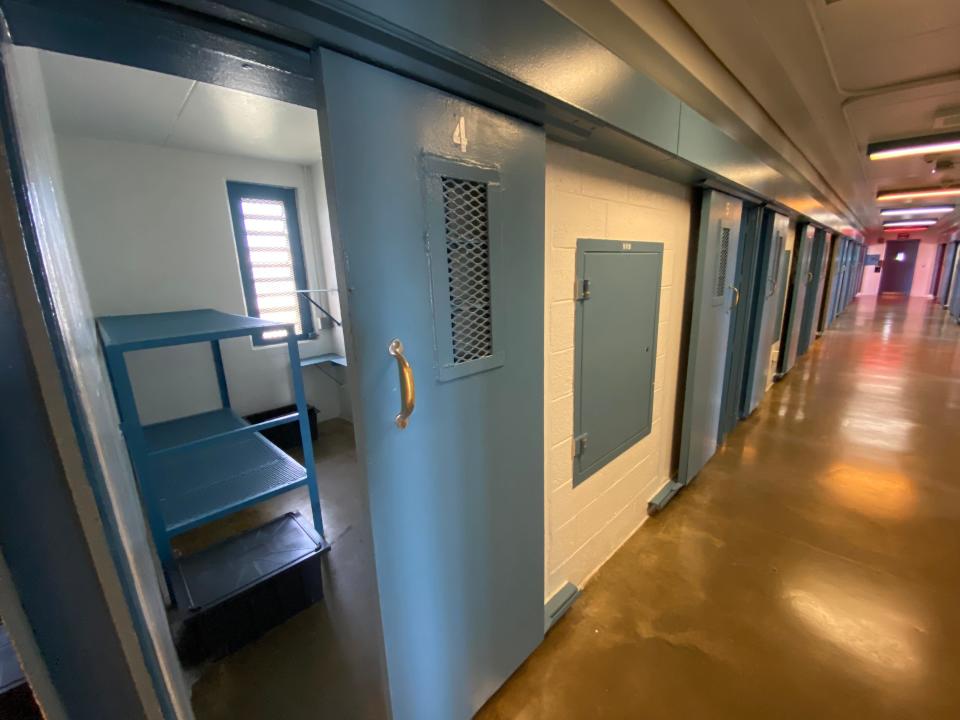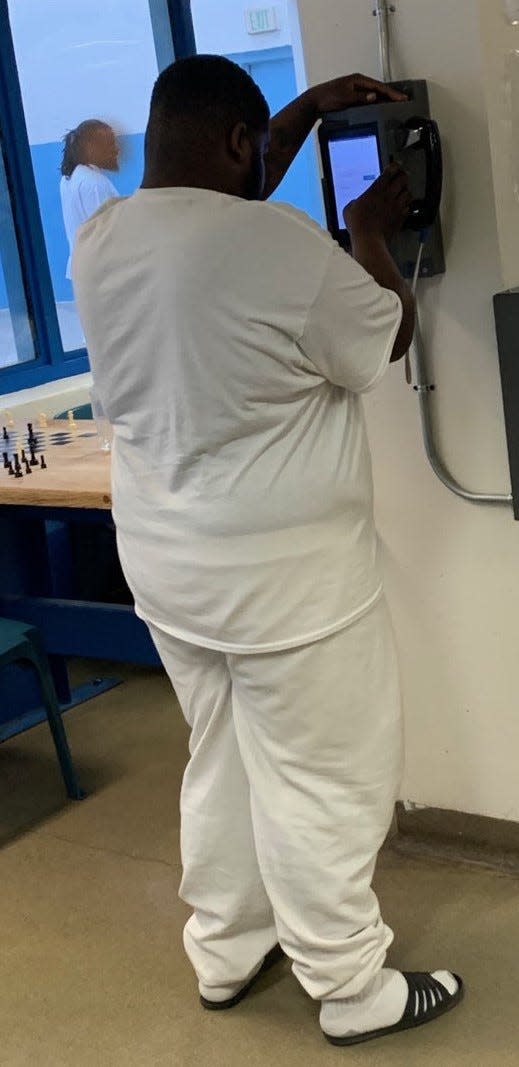Why letters to Delaware inmates will now be routed through Las Vegas, delaying delivery
At any point in Delaware, you will find yourself no further than 30 miles or so from the state's nearest prison.
However, when a person in Delaware mails a letter addressed to a person held in one of the state's four prison facilities, that correspondence must travel more than 4,000 miles, to Las Vegas, before eventually returning to Delaware and its intended recipient.
The long detour for about 3,000 pieces of mail sent each month to Delaware's prisons is part of Delaware Department of Correction's new mail screening processes that this month was implemented at each of the state's prisons and jail lockups after a recent, yearlong test period at the state's largest prison.
It's part of a controversial trend in which correctional facilities nationwide are routing inmate mail to central processing facilities where it is scanned, reproduced and then routed to its recipient. Prison leaders say the detour and expenses paid to a third-party scanning service plug a hard-to-detect hole through which contraband passes into facilities.

Prisoners have said the service can add weeks onto the snail-mail process, removes the personal touch of a handwritten letter and is another way for private industry to exploit the carceral system while drugs continue to get in through employees at prisons.
How it works
As of last week, letters, greeting cards, photographs, children's drawings and unbound newsletters intended to be sent to a person in a Delaware prison facility must be addressed to a P.O. Box in Las Vegas.
In Vegas, the mail is taken to a facility operated by Pigeonly Communications, a tech company once lauded in popular media for offering cut-rate phone service to connect prisoners and their families. Pigeonly takes the mail, searches it for contraband and scans the document.
The scanned mail is shared with corrections officials back in Delaware so they can use digital tools to search it for violations of DOC policy. DOC policy bars contraband as well as letters with content that includes, among other things, maps, gang symbols, tax forms, "items written in code" and "unauthorized" contact between people locked up.
Eventually, the scanned copy is printed in color and makes its way to Delaware and the prison where its recipient is held. The originals are destroyed after a period.
There are also prohibitions on certain types of mail that will be accepted by Pigeonly for scanning. That includes mail that has magazine cutouts or clippings, newspaper clippings and greeting cards with glitter or other glued on aspects.
Recent: Officer indicted after alleged overdose at Delaware's Ferris School juvenile lockup
Legal mail, official documents like ID cards, medical cards, diplomas and checks as well as printed material sent directly from the publisher do not have to go through the scanning detour. Additionally, mail sent out from Delaware's prisons takes the normal postal routes.
What's the purpose
Delaware will pay about $200,000 per year for the scanning detour.
The primary purpose is to head off contraband that is difficult to detect in-house, according to a statement by Jason Miller, Delaware Department of Correction spokesperson.
Specifically, officials are concerned about substances like synthetic marijuana and fentanyl that may be sprayed onto paper, incorporated into ink or otherwise hidden within correspondence, Miller wrote. Such contraband is dangerous for both officer and inmate workers who handle the mail, he added.
Corrections officials state that mail makes up about two-thirds of contraband sent to James T. Vaughn Correctional Center, the state's largest prison that has been testing the new mail scanning system for a year.
However, people held in prison say that other forms of smuggling, specifically through opportunistic officers, is the primary road for contraband. Critics of the new system argue the scanning system unfairly imposes upon everyone receiving mail in order to address abuses by a relatively small few.
Complaints of long delays
When Vaughn prison began to trial the mail scanning system last year, the primary complaint communicated through social media and messages to DelawareOnline.com/The News Journal dealt with time.
People in prison and those who send mail to them complained that the new process adds weeks onto the normal, local turnaround time for such correspondence.
In a written statement, correction officials said their contract with Pigeonly requires the mail be opened and scanned for DOC digital inspection within one day of receipt.
Miller, the correction spokesperson, said the department has tracked delivery during the trial of the system at Vaughn. He said the "latest tracking" shows a "delivery timeframe" of "approximately 23 days." Most of that is spent with the U.S. Postal Service in transit to or from the Las Vegas processing center.
He added that the department will conduct quarterly audits as part of its two-year contract with Pigeonly.
Are prisoners becoming more isolated with mail changes?
Others have also complained that photo reproductions are often inferior and replacing a handwritten letter with a scan is impersonal. Holding a child's drawing is not the same as holding a scanned reproduction of a child's drawing, for example. Some also don't want their letters or artwork scanned into and held in a digital DOC database.
The Prison Policy Project, a national nonprofit that advocates for the rights of prisoners, has pointed to the mail scanning trend as another way private profiteers are able to exploit the desperation of those locked away from friends and family.

Pigeonly offers subscription services to send mail to create and send letters, photos and cards digitally. There is a free version that caps the number of messages sent and the number of recipients to one. A monthly, paid subscription version is also available without those limits.
In 2023, people in Delaware's prisons participated in 399,000 video visits, sent or received 7.7 million electronic messages, including 150,000 photos electronically, Miller said. That compares to about 35,000 pieces of hard copy mail sent in the same period.
Miller said this shows Delaware prisoners are better connected to their outside supports than ever before.
But those electronic communications are also underpinned by private technology companies that charge prisoners per-video-visit or per-text-message fees at higher rates than the private market allows outside the prison walls.
Related: What happened when a Delaware prisoner tried to boycott the internet behind bars
Additionally, the system of tablets inside prison that allow for those communications sometimes fail. It is not uncommon for prisoners to type a statement piece-by-piece, across multiple paid messages because the tablets lag out while they are composing the message.
Miller's written statement said prison officials are currently working to expand the tablet system because of high demand. This will support further electronic communication as well as education, he said.
Contact Xerxes Wilson at (302) 324-2787 or xwilson@delawareonline.com. Delaware prisoners may also contact Xerxes Wilson on the GettingOut app.
This article originally appeared on Delaware News Journal: Why Delaware's prison mail now goes to Las Vegas and back

